8 Tips for Raising Bookworms
A young girl is curled up in an old, over-stuffed armchair, totally absorbed in the pages of a book.  A television sits nearby, silent and black with jealousy. In a corner, a computer gathers dust in concert with an abandoned gaming system. No one would guess that this girl lost in the world of Regency England crafted by literary great, Jane Austen, couldn’t read at all until fifth grade and fights against the headaches and blurred vision brought on by severe dyslexia. No one would believe that this beautiful twelve year old preteen who has devoured Little Women, Jane Eyre, and is nearly finished with the entire Anne of Green Gables series was still unable to recognize all the letters of the alphabet in the third grade.
A television sits nearby, silent and black with jealousy. In a corner, a computer gathers dust in concert with an abandoned gaming system. No one would guess that this girl lost in the world of Regency England crafted by literary great, Jane Austen, couldn’t read at all until fifth grade and fights against the headaches and blurred vision brought on by severe dyslexia. No one would believe that this beautiful twelve year old preteen who has devoured Little Women, Jane Eyre, and is nearly finished with the entire Anne of Green Gables series was still unable to recognize all the letters of the alphabet in the third grade.
So, with all the barriers to reading this young girl faced and all the preconceived notions of the demise of the book and the rise of the electronic age, why does this child choose a book, an ink and paper relic to some, over the hypnotic allure of technology?
Simple…
Children who love to read…READ! It’s just a simple fact of human nature that we are more inclined to do the things that interest and excite us rather than the things we are forced or obligated to do. So how do we engage our children’s hearts in the wonder of reading instead of just training their minds in its mechanics?
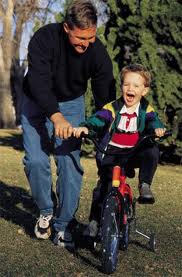 Think of learning to ride a bicycle.
Think of learning to ride a bicycle.
Your dad props you up on a shiny red bicycle, gives you a few pointers and an encouraging smile, then runs alongside you with his hand securely on the back of the bike seat, steadying and supporting you as you fly down the sidewalk with the wind in your hair and a thrilled and slightly terrified grin on your face.
Or.
Your dad sits you down with a diagram of a bicycle and drills you on its parts, making you list them over and over and recite them back to him in alphabetical order.
Which teaching style would result in a bicycle rider rather than just a memorization of bicycle parts? Which scenario would encourage a love of bicycle riding?
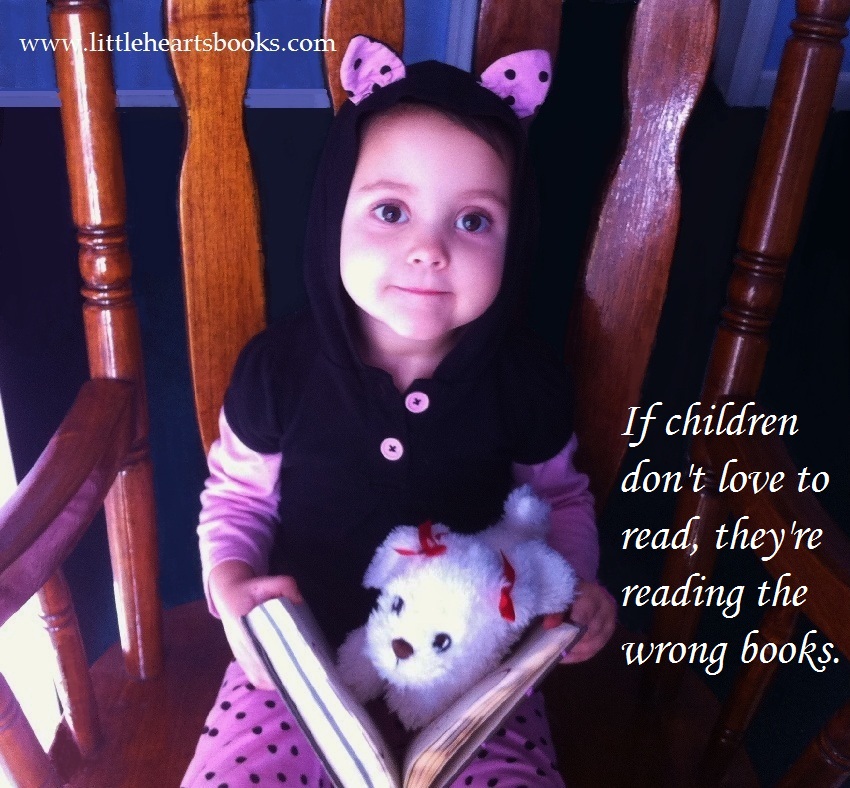 When it comes to reading, do you want your children to become readers or just learn the mechanics of reading? Do you want them to love to read or just know how? If a love of reading is your goal for your children, here are some ideas to get you started:
When it comes to reading, do you want your children to become readers or just learn the mechanics of reading? Do you want them to love to read or just know how? If a love of reading is your goal for your children, here are some ideas to get you started:
1.) Let them see you reading! Children learn more by watching what we do than by listening to what we say. Seeing your books laying around the house, trying to get your attention while you’re absorbed in an intense scene, giggling when you ‘sneak’ away to the bathroom with a favorite tome, all of these things will have a huge impact on their perception of reading as a desirable activity.
2.) Read to them from infancy on, and let them in on it! Don’t make reading a one-sided exercise with you doing all the talking. Make reading interactive by letting your little one turn pages (yes, even if they want to go backwards!) and point at the pictures and talk about the binding and maybe even chew on the book a bit (bookworms actually do eat books, after all!)
3.) Play, play, play! Seriously, stop being so serious! Children learn best through play, so grab some sidewalk chalk and head outside to the best classroom ever invented. Make up your own games or check out Pinterest and just have a blast! If your children associate learning to read with mommy playing abc hopscotch with them or daddy hiding abc eggs in the bushes, you’ve turned what could be a battle into a playground!
4.) If a child doesn’t love to read, they’re reading the wrong books! Surround them with books of every kind. Fill your home with paperback thrillers and dime-store novels and comic books (yes, comic books!) and nonfiction books on horses and whales and art and music. Creating an atmosphere ripe with knowledge and adventure at your children’s fingertips will go a long way towards making reading an active part of their lives. (And don’t forget the power of the fort! Creating a cozy nook that invites settling in for a reading adventure is really…well, inviting!)
5.) Oh, the places you’ll go! (A la Dr. Seuss!) Make monthly library ‘dates’ to return books and explore new and exciting genres at no cost to you. While you’re there, check out the library’s calendar of events for author visits and book readings and craft activities and mom’s groups. You’ll be amazed at how much the too often forgotten library system has to offer in most areas!
6.) Indie bookstores are the bomb-diggity, no joke! Most cities have one or more independent bookstores struggling to make it through the downturned economy and the advance of the electronic age. These small stores are little niches of wonder just waiting to be discovered, and by supporting them you will not only help keep a local business afloat, but you will also introduce your children to the warmth and beauty of walls lined with books, shopkeepers who can converse about every title like an old friend, and possibly even some local authors that you never even knew existed!
7.) A lifestyle of reading puts the vast knowledge of the ages into the hands of our children. Exchanging the life-long riches of a love of reading for the temporary value of facts gleaned from required reading lists is a paltry deal, indeed. Encourage reading, yes, but let their hearts, their interests, their imaginations choose their reading material. Whatever momentary facts they need for the next test or quiz can be found just as easily on Google. A passion for reading can only be found in the heart of the child.
8.) Parenting matters! Parenting choices strongly impact a child’s level of trust and security. A love of learning grows when it isn’t stifled by fear or stress. Parents fostering a healthy attachment are also fostering a love of learning in their children which translates directly into a love of reading!
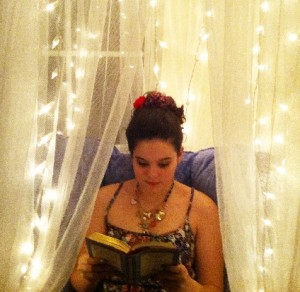 I love that my older children have already met and fallen in love with my old friends such as Sense & Sensibility, The Great Gatsby, Moby Dick, Of Mice and Men, The Red Badge of Courage, War and Peace, The Hound of the Baskervilles, and so many, many more. And I love that my younger children still have new friends waiting to be discovered between the covers of wonderful, beautiful, ageless books. Happy reading!
I love that my older children have already met and fallen in love with my old friends such as Sense & Sensibility, The Great Gatsby, Moby Dick, Of Mice and Men, The Red Badge of Courage, War and Peace, The Hound of the Baskervilles, and so many, many more. And I love that my younger children still have new friends waiting to be discovered between the covers of wonderful, beautiful, ageless books. Happy reading!
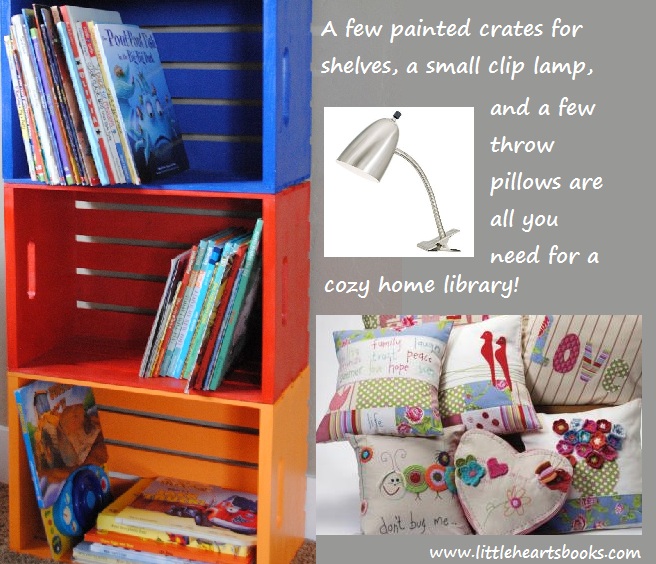
Related posts:
25 Must-Have Books for Baby Bookworms
25 Must-Have Books for Toddler Bookworms
25 Must-Have Books for Preschool Bookworms
There is such a rush these days to get children sleeping through the night, weaned off the breast, eating solid foods, potty trained, reading independently, and on and on, that we seem to have lost the ability to simply enjoy life as it happens and let our children do the same. A Return to Childhood
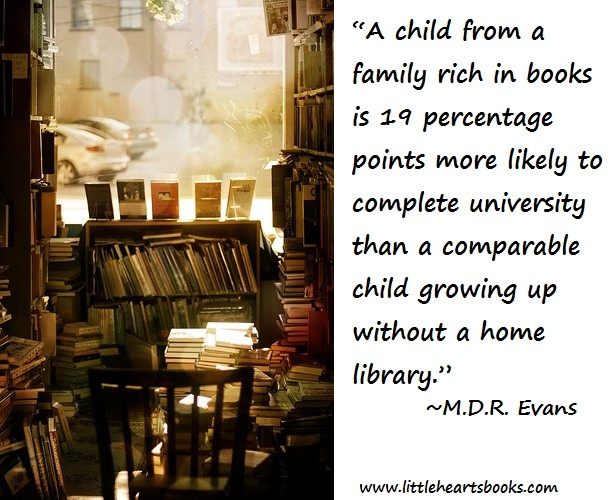
Successful reading means far more than possessing the ability to read. Engaging the hearts of students moves reading success beyond a life skill and turns it into a life style. And graphic novels are too powerful of a tool in our arsenal to be disregarded because of pride or prejudice. Raising Super Readers~The MARVELous Power of Comic Books!
In the world of a child wonders are as simple as sticks and sheets, leaves and books, boxes and giggles, and the promise in a rainy day. The Seven Wonders of the World of Childhood
Think homeschooled children are unsocialized, over-controlled, locked-away-from-the-world misfits? Think again! My Renaissance Girl
Parenting choices strongly impact the level and type of attachment a child develops and, by extension, the development of a love of learning. A love of learning grows when it isn’t stifled by fear or stress or regimented by over-structuring or a focus on achievement or competition. Parents fostering a healthy attachment are thus also fostering a life-long love of learning in their children. Love, Play, Learn!
On a Winnie the Pooh style ‘long explore’ my little Pooh Bear discovered the world in The Many Adventures of My Little Pooh Bear
If you give a toddler a book
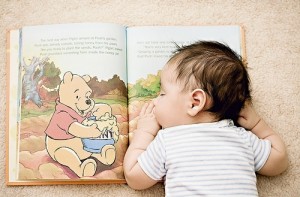
It’s never too early!
He’ll climb into your lap
While he’s in your lap
He might lay his head on your chest
When he lays his head on your chest
He’ll hear your heartbeat
When he hears your heartbeat
He’ll probably ask if you can hear… If You Give A Toddler A Book…
My SPD/SLD/ADD (Sensory Processing Disorder, Specific Learning Disability-Dyslexia, Visual and Auditory Processing Disorders, Attention Deficit Disorder, etc) sweetie, aka Renaissance Girl, has raised the bar on my homeschooling skills more times than I can count. Her beautiful mind sees the world through a unique lens similar to those of historical icons such as Thomas Edison, Leonardo Da Vinci, Benjamin Franklin, and Albert Einstein…Beautiful Minds
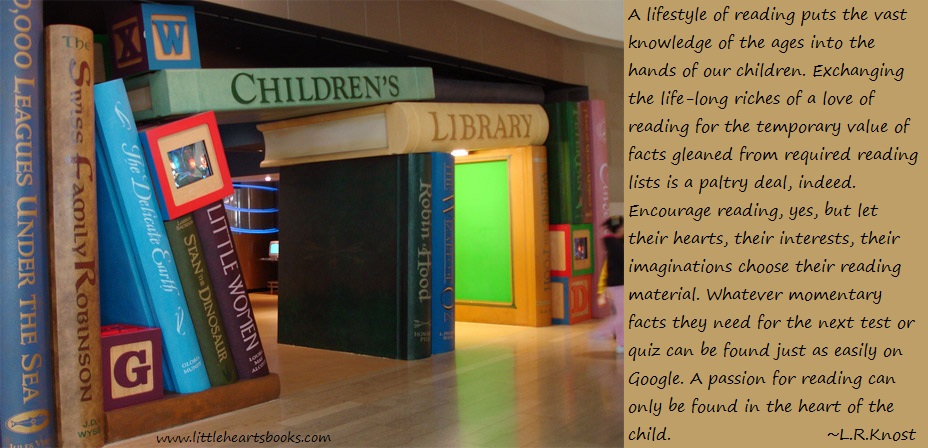
February 9, 2012 | Categories: adolescence, bookish, books, childhood, children, children's books, homeschooling, literacy, pinterest, play, preschooler, reading, teens, toddler | Tags: adolescence, bedtime stories, childhood, children, children's books, Christian children's books, homeschooling, nature, outdoors, parenting, park, play, playground, teens, toddler | 20 Comments »  Award-winnning author, L.R.Knost, is the founder and director of the children's rights advocacy and family consulting group, Little Hearts/Gentle Parenting Resources, and Editor-in-Chief of Holistic Parenting Magazine. Books by L.R.Knost include Whispers Through Time: Communication Through the Ages and Stages of Childhood ; Two Thousand Kisses a Day: Gentle Parenting Through the Ages and Stages ; The Gentle Parent: Positive, Practical, Effective Discipline ; and Jesus, the Gentle Parent: Gentle Christian Parenting the first four books in the Little Hearts Handbook gentle parenting series, and children’s picture books Petey’s Listening Ears and the soon-to-be-released Grumpykins series.
Award-winnning author, L.R.Knost, is the founder and director of the children's rights advocacy and family consulting group, Little Hearts/Gentle Parenting Resources, and Editor-in-Chief of Holistic Parenting Magazine. Books by L.R.Knost include Whispers Through Time: Communication Through the Ages and Stages of Childhood ; Two Thousand Kisses a Day: Gentle Parenting Through the Ages and Stages ; The Gentle Parent: Positive, Practical, Effective Discipline ; and Jesus, the Gentle Parent: Gentle Christian Parenting the first four books in the Little Hearts Handbook gentle parenting series, and children’s picture books Petey’s Listening Ears and the soon-to-be-released Grumpykins series.
Baby Led Weaning
[Reprinted from Two Thousand Kisses a Day: Gentle Parenting Through the Ages and Stages by L.R.Knost. Whispers Through Time: Communication Through the Ages and Stages of Childhood and The Gentle Parent: Positive, Practical, Effective Discipline also available through Amazon and other major retailers.]
 As babies grow from the newborn stage, through infancy, and into the toddler years, there is a natural and healthy progression toward independence that blossoms when a secure trust-foundation is in place. That trust-foundation is forged through the consistent meeting of a baby’s needs lovingly, gently, and empathetically by a primary caregiver.
As babies grow from the newborn stage, through infancy, and into the toddler years, there is a natural and healthy progression toward independence that blossoms when a secure trust-foundation is in place. That trust-foundation is forged through the consistent meeting of a baby’s needs lovingly, gently, and empathetically by a primary caregiver.
When a baby is breastfed, his mother is naturally close and available and, when parenting by following her maternal instincts, tends to be in tune with her baby in a beautiful symbiosis of unspoken communication. At some point, a baby will begin to ‘taste-test’ foods, learning through oral exploration about the textures and tastes of foods other than breastmilk. This progresses to a decrease in need for mommy’s milk for nutritional purposes, but is often accompanied by an unexpected and dramatic increase in demand to nurse which can be quite disconcerting, not to mention annoying!
Parents have a tendency to assign motives to their children’s behavior, typically based on their own childhood experiences and/or their adult perception of the circumstances. In the case of the increased demand for nursing which seems inversely proportional to the need for nursing, the motives parents often assign to their toddlers are ‘testing’ or ‘pushing boundaries.’
But think of it from the toddler’s perspective. They have been gradually moving away from their ‘source’ of all things and exploring what can be a big, scary world for a little person. No longer are they completely helpless, entirely dependent on another person for everything, but, as their independence has increased, so has their awareness of the world around them and their smallness by comparison. It is at this point that the all-important source of nutrition shifts into a support role, becoming, literally, a touchstone of security. A toddler’s increased need to nurse is, in fact, a need for reconnection and reassurance, not punishment!
Obviously, nursing every five minutes isn’t practical and can be downright uncomfortable, especially with the accompanying toddler ‘gymnurstics.’ But this is an excellent time for a parent to learn how to remain in tune with their child as the ages and stages go by. Paying attention to the needs behind the behaviors is an essential element in a healthy parent/child relationship, and, once a little one progresses beyond the basic needs stage, that learning curve can get pretty steep. This is a time when parents can begin experimenting with new ways to engage with their children to meet those reconnection needs in age-appropriate and relationship-building ways, an important skill that will serve parents well in the teen years!
Here are some things to try when faced with a toddler insisting on nursing every few minutes:
- Babywearing is one of my best tools, and I have a sling nearby for any time my toddler seems to need some closeness.
- Reading picture books is also a daily (actually, multiple times a day!) standard at our house, and when my little one toddles up to me, book in hand, I’ll plop down on the floor in whatever room I’m in and take a few minutes to read a book and talk about the pretty pictures.
- Sitting down together in the chair my toddler is used to nursing in and cuddling, reading, playing pat-a-cake, watching a DVD together, or even offering food or snacks to share, gives them a sense of sameness that is very reassuring.
- Playing games, making silly faces in the mirror, playing dress up together, taking walks, going to the park, anything that assures my toddler that I’m still available to her and enjoy being with her helps to meet the underlying need driving the nursing demands.
- Setting nursing boundaries and gently maintaining them might sound something like, “You can nurse once on each side, then we’re all done for now,” or “We’ll nurse before bedtime, and then we’ll cuddle until you go to sleep.” Don’t be afraid to set boundaries, but make sure to stay in-tune with your toddler and offer the connection and comfort they need to stay secure in their relationship with you as you move through this big transition in their life.
The main message here is to try different things until you find what works for you and your child, always focusing on staying connected and responsive to your little one’s needs. Change can be difficult for both parents and children, but it can be an exciting time, too, as you get to grow with your child into the next stage of life!
Related posts:
Love in the Time of Cosleeping
And Baby Makes Three~Surviving the first three months with a newborn!
A Boy, A Girl, and A Baby~Journey to Gentle Parenting
Babywearing Basics Resource Guide
Practical Gentle Discipline Guide
Toddlers, Tantrums, and Time-Ins, Oh My!
Parenting in Public: Toddler Time
Testing the Boundaries~What’s A Parent To Do?
Playground Confessions~Look Who’s Talking!
December 15, 2011 | Categories: attachment parenting, baby led weaning, babywearing, books, breastfeeding, children's books, communication, food, gentle parenting, natural parenting, nursing, toddler | Tags: attachment parenting, baby led weaning, babywearing, breastfeeding, Christian children's books, food, gentle parenting, nursing, parenting, play, positive parenting, toddler | 7 Comments »  Award-winnning author, L.R.Knost, is the founder and director of the children's rights advocacy and family consulting group, Little Hearts/Gentle Parenting Resources, and Editor-in-Chief of Holistic Parenting Magazine. Books by L.R.Knost include Whispers Through Time: Communication Through the Ages and Stages of Childhood ; Two Thousand Kisses a Day: Gentle Parenting Through the Ages and Stages ; The Gentle Parent: Positive, Practical, Effective Discipline ; and Jesus, the Gentle Parent: Gentle Christian Parenting the first four books in the Little Hearts Handbook gentle parenting series, and children’s picture books Petey’s Listening Ears and the soon-to-be-released Grumpykins series.
Award-winnning author, L.R.Knost, is the founder and director of the children's rights advocacy and family consulting group, Little Hearts/Gentle Parenting Resources, and Editor-in-Chief of Holistic Parenting Magazine. Books by L.R.Knost include Whispers Through Time: Communication Through the Ages and Stages of Childhood ; Two Thousand Kisses a Day: Gentle Parenting Through the Ages and Stages ; The Gentle Parent: Positive, Practical, Effective Discipline ; and Jesus, the Gentle Parent: Gentle Christian Parenting the first four books in the Little Hearts Handbook gentle parenting series, and children’s picture books Petey’s Listening Ears and the soon-to-be-released Grumpykins series.
The Great Santa Claus Debate
[Excerpt reprinted from Jesus, the Gentle Parent: Gentle Christian Parenting by L.R.Knost. Two Thousand Kisses a Day: Gentle Parenting Through the Ages and Stages; Whispers Through Time: Communication Through the Ages and Stages of Childhood; and The Gentle Parent: Positive, Practical, Effective Discipline also available on Amazon and through other major retailers.]
~~~~~~~~~~~~~~~~~~~~~
 St.Nicholas was just a man, but he was a man with a mission. Born in the third century, he grew up to be an intensely kind-hearted man who was especially devoted to children’s issues and helping the poor. He was a Greek Bishop who defied the established Church in order to go out among the ‘unwashed masses’ and live his life as the ‘heart and hands of Jesus.’ While many miracles and legends about him evolved through the centuries, his penchant for leaving secret gifts is the one that captured the hearts and imaginations of people world-wide, leading to the present-day legend of Santa Claus.
St.Nicholas was just a man, but he was a man with a mission. Born in the third century, he grew up to be an intensely kind-hearted man who was especially devoted to children’s issues and helping the poor. He was a Greek Bishop who defied the established Church in order to go out among the ‘unwashed masses’ and live his life as the ‘heart and hands of Jesus.’ While many miracles and legends about him evolved through the centuries, his penchant for leaving secret gifts is the one that captured the hearts and imaginations of people world-wide, leading to the present-day legend of Santa Claus.
I, like many new parents, struggled with the idea of perpetuating a ‘false belief’ and thus undermining my children’s trust. But then I turned to the Bible and saw how Jesus, who spoke absolute truth always, often spoke that truth in stories. He knew something about people’s hearts that I needed to learn as a young parent. He knew that the human mind is logic, analysis, reason, and that the human heart is imagination, creativity, love. He knew that sometimes you have to bypass people’s minds and speak straight to their hearts, those well-springs of wonder, for true understanding to occur and that often the deepest truths are the ones that are too big for the human mind to receive and can only be grasped by the heart.
When it comes to the breathtaking gift of the Christ-Child, the Eternal Creator born of a woman, God Himself wrapped in swaddling clothes, the I AM in a manger, what better way to share such an absurd and immense truth than Jesus’ way…with a story? How else would my little ones be able to grasp the concept of such a gift?  How would they embrace the wonder? How could I possibly break down the impossible into a pedantic lecture? Would the improbable make more sense in a dissertation?
How would they embrace the wonder? How could I possibly break down the impossible into a pedantic lecture? Would the improbable make more sense in a dissertation?
And so I chose the way of the parable. I embraced Christmas in all its glory, decorated and baked and showered my little ones with gifts, all while sharing the story of the birth of a Baby. Woven through every event, every tradition, every memorable moment of our family’s Christmas, is the celebration of the wondrous gift of a Savior. We watch Rudolph the Red-Nosed Reindeer, Santa Claus is Coming to Town, and all the other fun Christmas shows together. We read bedtime stories about Christmas elves and magical toys and talking animals. And when my children ask me if Santa really exists, I tell them yes, because it’s true. Every parent who carries on St. Nicholas’ tradition of leaving secret gifts, of being the heart and hands of Jesus, of sharing the wonder, excitement, and glory of the most extraordinary Gift ever given to mankind, every one of us is Santa Claus.
My children never outgrow their belief in Santa. When they’re ready we simply share the beautiful story of St. Nick and invite them to join us in the fun of becoming Santa for their younger siblings and for children in need in our community. They still get presents, of course, but they also get to experience a new facet of the wonder of Christmas through the excitement of secret-keeping and present-wrapping and plan-making and joy-giving. Becoming Santa is an exciting and wonder-filled experience for our children, a step toward adulthood that makes them feel like they’ve been entrusted with a wonderful secret and gives them an opportunity to experience the incredible joy of generosity.
Note: I don’t ever use Santa Claus as a threat (i.e. “I’m calling Santa right now if you don’t…” or “Santa’s watching, and you won’t get any presents for Christmas if…”) first because a parable’s purpose is to teach, not to manipulate or control, and second because what I am teaching is the wonder and miracle of receiving a free gift, one that can’t be earned because it is freely given. Manipulating my children into ‘performing’ might work temporarily, but am I really trying to raise works-driven Christians, or am I trying to teach my little people about the wonderful gift of grace?
Here are some of the ways we focus on Jesus for Christmas:
Children learn best and most happily through play, so letting my little people ‘play Santa’ (i.e. wrapping up their toys and ‘surprising’ each other, making ornaments and delivering them to a nursing home, shopping at the dollar store for Operation Christmas Child, etc.) is a very important part of our Christmas traditions. And the best part is…they’re playing Santa for Jesus!
Leading up to Christmas, we marvel about how Jesus loves us so much He wants us to get presents on His birthday (truly awe-inspiring to children and a lesson in sacrificial giving!) because all He wants for His birthday are smiles and happy hearts.
Then we brainstorm ways to give Jesus as many ‘birthday presents’ as possible (a lesson in generosity). We work together to share Christmas cheer with everyone we meet, but focus our best efforts on the grumpiest people because they don’t smile as often and so their smiles make really special gifts for Jesus (a lesson in unconditional love).
We have a 12 Days of Christmas tradition where everyone gets a small present (chocolate, a special pencil, etc), and we read Christmas picturebooks every evening, building excitement for the Christmas morning celebration of the BEST GIFT EVER!
On Christmas Eve, we go to a special church service and then, after celebrating Christmas with family, we go home and make a fire in the fireplace (in Florida weather!) and make s’mores and hot chocolate and read the story of Jesus’ birth from Luke.
Then, on Christmas morning, we have a ‘Happy Birthday, Jesus’ party before opening presents, complete with a birthday cake and candles and singing ‘Happy birthday to Jesus!’
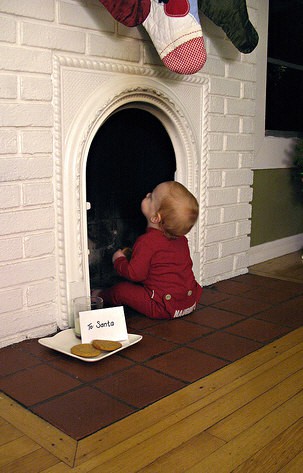
Here are some other resources on making the meaning of Christmas central to your celebrations this year (I’ll be adding more as I find them):
Celebrating Jesus with a Santa Claus Christmas
24 Tips for a Safe, Stress-Free & Jolly Holiday… A Very Toddler Christmas
7 Tips and Traditions to Make Giving a Standard of Living
What traditions does your family have to keep Christ in Christmas? Share them in the comment section!

December 5, 2011 | Categories: Advent, Bible, books, children's books, Christian, Christian parenting, Christmas, family, Jesus, Santa Claus, St. Nicholas, traditions | Tags: bedtime stories, Bible, childhood, children, children's books, Christian children's books, Christian parenting, Jesus, parenting, play, sacrifice, Santa Claus, St. Nicholas, traditions | 19 Comments »  Award-winnning author, L.R.Knost, is the founder and director of the children's rights advocacy and family consulting group, Little Hearts/Gentle Parenting Resources, and Editor-in-Chief of Holistic Parenting Magazine. Books by L.R.Knost include Whispers Through Time: Communication Through the Ages and Stages of Childhood ; Two Thousand Kisses a Day: Gentle Parenting Through the Ages and Stages ; The Gentle Parent: Positive, Practical, Effective Discipline ; and Jesus, the Gentle Parent: Gentle Christian Parenting the first four books in the Little Hearts Handbook gentle parenting series, and children’s picture books Petey’s Listening Ears and the soon-to-be-released Grumpykins series.
Award-winnning author, L.R.Knost, is the founder and director of the children's rights advocacy and family consulting group, Little Hearts/Gentle Parenting Resources, and Editor-in-Chief of Holistic Parenting Magazine. Books by L.R.Knost include Whispers Through Time: Communication Through the Ages and Stages of Childhood ; Two Thousand Kisses a Day: Gentle Parenting Through the Ages and Stages ; The Gentle Parent: Positive, Practical, Effective Discipline ; and Jesus, the Gentle Parent: Gentle Christian Parenting the first four books in the Little Hearts Handbook gentle parenting series, and children’s picture books Petey’s Listening Ears and the soon-to-be-released Grumpykins series.
Toddlers, Tantrums, and Time-Ins, Oh My!
[Portions reprinted from The Gentle Parent: Positive, Practical, Effective Discipline by L.R.Knost. Whispers Through Time: Communication Through the Ages and Stages of Childhood and Two Thousand Kisses a Day: Gentle Parenting Through the Ages and Stages also available on Amazon and through other major retailers.]
 When a little person feels frustrated, overwhelmed, or just plain old out-of-sorts (read: tantrum time!) it’s tempting for parents to focus on correction rather than connection. But when children are intensely stressed, the prefrontal cortex of the brain (which in early childhood is an under-developed, mushy ‘ball of playdoh’ waiting to be formed) is flooded with cortisol, aka the ‘stress hormone.’ The result is what is known as the fight-freeze-or-flight syndrome in which higher brain functions (learning, reason, self-control) are markedly hampered and lower brain functions (instinct, physical reactions) take over. This is an in-built survival mechanism that gradually comes under conscious control through years of growth in a safe and supportive environment.
When a little person feels frustrated, overwhelmed, or just plain old out-of-sorts (read: tantrum time!) it’s tempting for parents to focus on correction rather than connection. But when children are intensely stressed, the prefrontal cortex of the brain (which in early childhood is an under-developed, mushy ‘ball of playdoh’ waiting to be formed) is flooded with cortisol, aka the ‘stress hormone.’ The result is what is known as the fight-freeze-or-flight syndrome in which higher brain functions (learning, reason, self-control) are markedly hampered and lower brain functions (instinct, physical reactions) take over. This is an in-built survival mechanism that gradually comes under conscious control through years of growth in a safe and supportive environment.
Expecting young children to have the maturity and self-control to overcome this God-given survival instinct is unrealistic. Threatening, punishing, or even reasoning with them while their higher brain functions are suppressed is futile and actually just adds more stress to the situation (more stress=fuel on the tantrum-fire!).
What they really need is help…first, help coping with their big emotions…then, help reconnecting with their source of safety and security (you!)…and last, help processing the problem that sent them into a maelstrom of emotion in the first place. Punishing them, yelling at them, sending them to their room, or putting them in time-out disconnects them even further from their source of security and not only delays a resolution of the issue, but misses an opportunity to equip them with the tools they need to handle future problems.
Drawing them close (time-in), offering words to help them express their frustrations (reflective language), and modeling coping skills and self-control for them are all ways of reconnecting with them to help them successfully navigate their present difficulty as well as cope with those they’re confronted with in the future.
One effective tool for use in helping little ones cope with big emotions is a Calm-Me-Jar.
Here are our Calm-Me-Jars~
They are made from the little round plastic Coke bottles sold around Christmas time. (Other times of the year you can get Aquapod water bottles which are similar.) I like them because, first, they aren’t glass (who really wants to hand an upset toddler or preschooler a glass anything?!?) and, second, they are perfect for small hands to shake and manhandle to their heart’s content.
Glitter glue gel didn’t work at all because it stayed all clumped up. Just basic craft glitter glue from the Dollar Tree worked really well, though. Cold water kept the glue clumpy, too, so lukewarm tap water is the best bet. I used colored glitter glue with a tiny drop of food coloring in the colored Calm-Me-Jars, and just silver glitter glue with the clear one. I also added actual glitter to each jar because the glitter in the glue was itsy bitsy. The combination of the two types of glitter really turned out pretty. Add about one ounce of glitter glue in each bottle and then as much glitter as you like and a tiny bit of food coloring if you want to make the colors deeper.
When each of the bottles had the look we wanted, we glued the tops down with hot glue, then added ribbons for decorations. Our original Calm-Me-Jars are approaching a year old, and they haven’t become cloudy or clumpy, etc, so it seems that as long as you keep the lids on, they’ll last indefinitely! Here’s a closer view:
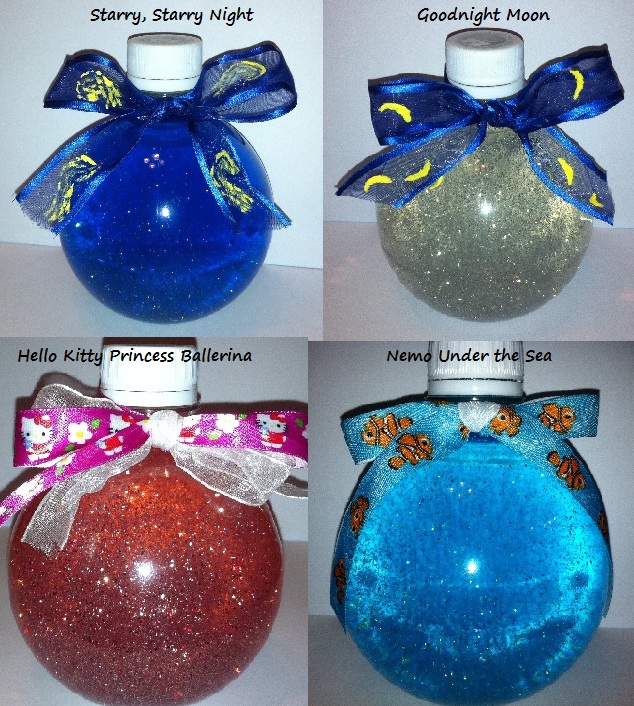
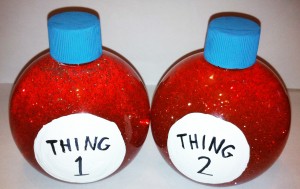
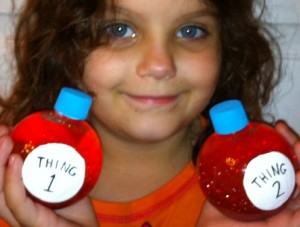
(If you’re really into Dr Seuss, here’s some Seussical fun for your little one!)
When my littler ones have meltdowns (or, if I can catch it, before they reach that point), I pull out one of the Calm-Me-Jars and shake it up and just let them hold it while I hold them or, if they aren’t ready to be touched, I stay close by and talk or sing quietly. When I feel their body relaxing and their breathing slow down, I might say something like, “It’s sad when we can’t have a toy, isn’t it?” or whatever else will reflect what they seem to be unable to express.
If they’ve hit someone or thrown something, I first reflect what my little person is feeling (after tending to the other child if they are hurt or upset), then, when they’re a bit calmer, I go on to reflect what the other person might be feeling, “It hurts Sissy when you hit her.” Then I offer a suggestion about the next step. “Why don’t we go ask Sissy if she’s okay? If she has a boo-boo, we might need to get a bandage for her.” It’s very intriguing for little ones to feel like they can ‘fix’ something, and often the idea that they have that kind of power makes all the difference in the frequency and intensity of meltdowns, not to mention the positive impact of learning to think and care about the feelings of others.
When an older preschooler/early elementary-aged child is about to have a meltdown, I first try to help them begin to recognize those feelings by verbalizing for them, “I see you’re feeling upset. It’s hard not getting things we want, isn’t it?” (Or “having to do things we don’t want to” etc). Then, depending on how much they seem to need connection vs. simply calming down, I either ask if they want to use their Cozy Corner (see below) to help them calm down, “Do you want to head over to your Cozy Corner for a few minutes and grab one of your Calm-Me-Jars so you can have a break for a bit?”
Or if they need to connect, I scoop them against my side into a big hug and head into the Cozy Corner with them (or just my rocking chair) for a cuddle (aka a time-in). While we’re cuddling, or before if they’re feeling too angry to be touched, I let them shake the Calm-Me-Jar as hard and often as they want right at first as a physical outlet for their intense feelings, watching to see when their breathing begins to even out and their body to relax. When they’ve calmed just enough to hear me, I quietly talk them through the calming process, “Look at all that fairy dust bouncing around like crazy! I bet that’s how it feels inside when you’re so upset. Look at how it’s starting to slow down and settle to the bottom. If we breathe really slowly, we can feel ourselves settling like the fairy dust.” Sometimes we sing a quiet song or I offer to read a book or pray with or for them, depending on the circumstances.
When my five-year-old is mad at one of her siblings, she’ll often bring one of her Calm-Me-Jars (Goodnight Moon is a favorite at night!) and work out some of the upset physically by shaking the jar like crazy and telling me how angry she is. When she’s a bit calmer, we’ll have a little cuddle and watch the glitter settle while saying goodnight to the moon, all the furniture, and whatever other silliness we come up with until she’s calm. If there’s a discipline issue, we’ll work through it at that point because I know that’s when she can hear me and really process what I’m saying. (With Starry, Starry Night we sometimes sing Twinkle, Twinkle Little Star; with Hello Kitty Princess Ballerina she likes to dance her frustrations away while the glitter dances with her; and with Nemo Under the Sea we speak ‘whale’ like Dorry or make fishy faces at each other.)
The key to all of this is being in tune with your little one enough to understand their personality and work with it instead of against it. My five-year-old is spunky and silly, so having a long, serious talk would drive her nuts and accomplish nothing, whereas when some of my older ones were little they really liked to talk things through (and still do!).
Here are some Cozy Corner ideas for when your little people need a little space to cope with this great big world:
 Set aside a small corner of the family room so they can still be close to you and let them help decorate it and choose a favorite blanket, some comfy pillows, and a few special books and stuffed friends to keep there. Here’s a cool tutorial for how to make this tent for under $25!
Set aside a small corner of the family room so they can still be close to you and let them help decorate it and choose a favorite blanket, some comfy pillows, and a few special books and stuffed friends to keep there. Here’s a cool tutorial for how to make this tent for under $25!
Let them help name their special place so they’ll know it’s theirs. Some suggestions are Cozy Corner, Comfort Zone, Quiet Cave, or Happy Place. And keep in mind, the Cozy Corner is a place for little ones (usually preschool and older) to go when they decide they want a break, not when we decide they need a break (or that we need a break, lol!). It’s a safe, comfortable, quiet place for them to relax alone if they want to or for us to join them for a time-in cuddle or chat.
And, for times when all else fails, sometimes a little fairy magic is all it takes to turn a bad day into a good one or to help a little one fall asleep. When your toddler/preschooler is a bit cranky, sloooww down, give lots of cuddles, listen, listen, listen, and ask if  they need you to sprinkle some fairy dust on them to turn their frown upside down! For sleeping issues, sprinkle a bit of fairy ‘sleeping’ dust on their bed and stay with your little one, softly humming, stroking their back, or just quiet and reassuring, depending on their needs (they’ll let you know!) until they’re asleep. It’s typically the long, dark, lonely separation from mama causing the problem, instead of a sleep issue, anyway!
they need you to sprinkle some fairy dust on them to turn their frown upside down! For sleeping issues, sprinkle a bit of fairy ‘sleeping’ dust on their bed and stay with your little one, softly humming, stroking their back, or just quiet and reassuring, depending on their needs (they’ll let you know!) until they’re asleep. It’s typically the long, dark, lonely separation from mama causing the problem, instead of a sleep issue, anyway!
You can click on the picture to follow the link to buy these adorable fairy dust jars filled with microfine glitter, or you can go to Michaels and buy some cute little bottles and microfine glitter (You can find it next to the fabric paints and t-shirts instead of with the regular glitter, for some reason. Lol) and make your own little bottles of fairy dust!
Related posts:
Practical, Gentle, Effective Discipline
200 Ways to Bless Your Children with a Happy Childhood
Testing the Boundaries~What’s A Parent To Do?
When Children Hit~10 Tips for Parents
Easy Peasy DIY Parenting Tools
One Slippery Sock & Other Silly Tools for your Parenting Toolbox!
October 6, 2011 | Categories: Bible, calm me jar, children's books, Christian parenting, communication, cozy corner, family, gentle discipline, gentle parenting, grace-based discipline, Jesus, positive discipline, rebellion, soothing, stress, time-in | Tags: attachment parenting, children, Christian children's books, Christian parenting, gentle discipline, gentle parenting, Jesus, play, positive parenting | 49 Comments »  Award-winnning author, L.R.Knost, is the founder and director of the children's rights advocacy and family consulting group, Little Hearts/Gentle Parenting Resources, and Editor-in-Chief of Holistic Parenting Magazine. Books by L.R.Knost include Whispers Through Time: Communication Through the Ages and Stages of Childhood ; Two Thousand Kisses a Day: Gentle Parenting Through the Ages and Stages ; The Gentle Parent: Positive, Practical, Effective Discipline ; and Jesus, the Gentle Parent: Gentle Christian Parenting the first four books in the Little Hearts Handbook gentle parenting series, and children’s picture books Petey’s Listening Ears and the soon-to-be-released Grumpykins series.
Award-winnning author, L.R.Knost, is the founder and director of the children's rights advocacy and family consulting group, Little Hearts/Gentle Parenting Resources, and Editor-in-Chief of Holistic Parenting Magazine. Books by L.R.Knost include Whispers Through Time: Communication Through the Ages and Stages of Childhood ; Two Thousand Kisses a Day: Gentle Parenting Through the Ages and Stages ; The Gentle Parent: Positive, Practical, Effective Discipline ; and Jesus, the Gentle Parent: Gentle Christian Parenting the first four books in the Little Hearts Handbook gentle parenting series, and children’s picture books Petey’s Listening Ears and the soon-to-be-released Grumpykins series.
I wish that I were the Mother that I play at the grocery store.
 I’m not really a patient mother. I just play one on tv at the grocery store.
I’m not really a patient mother. I just play one on tv at the grocery store.
I am an excellent actress, too. Oscar worthy. Anyone who sees my weekly Kroger performance probably thinks I’m a saint.
I am not.
In the privacy of my own home when no one is looking I am selfish, I am impatient, I say no more than I need to, and I don’t listen very well.
But at the grocery store? I am kind. I am patient. I am gentle. I am slow to speak and quick to listen. I am permissive. I float on air and quote Jesus.
Or maybe it’s unfair to say the good me isn’t the real me. Maybe the pressure of knowing people are observing is just the push I need to be the me I wish I was. Maybe that’s why cultures and families used to live in community more and why villages raised children. Maybe we’ve lost something with our nuclear families.
Maybe I should just starting hanging out at the grocery store more…
Do you find that you’re a “better” mom in public?
Today’s ‘Wishes Week’ guest poster, Jessica, is the mother of four children whom she affectionately refers to as “The Wild Things”. Being home 24/7 with her Wild Things inspired her to prayerfully and painfully delve into what it means to be a good mother and inspired the writing of her eBook Parenting Wild Things – Surviving the Rumpus. She loves to laugh, write, and dig deeper into her faith. You can find her doing these things aplenty on her blog Bohemian Bowmans, Facebook, and Twitter.
eBook Parenting Wild Things – Surviving the Rumpus. She loves to laugh, write, and dig deeper into her faith. You can find her doing these things aplenty on her blog Bohemian Bowmans, Facebook, and Twitter.
August 3, 2011 | Categories: children's books, food, gentle discipline, gentle parenting, parenting guide, positive discipline | Tags: attachment parenting, children's books, Christian children's books, discipline, gentle discipline, gentle parenting, positive parenting | Leave A Comment »  Award-winnning author, L.R.Knost, is the founder and director of the children's rights advocacy and family consulting group, Little Hearts/Gentle Parenting Resources, and Editor-in-Chief of Holistic Parenting Magazine. Books by L.R.Knost include Whispers Through Time: Communication Through the Ages and Stages of Childhood ; Two Thousand Kisses a Day: Gentle Parenting Through the Ages and Stages ; The Gentle Parent: Positive, Practical, Effective Discipline ; and Jesus, the Gentle Parent: Gentle Christian Parenting the first four books in the Little Hearts Handbook gentle parenting series, and children’s picture books Petey’s Listening Ears and the soon-to-be-released Grumpykins series.
Award-winnning author, L.R.Knost, is the founder and director of the children's rights advocacy and family consulting group, Little Hearts/Gentle Parenting Resources, and Editor-in-Chief of Holistic Parenting Magazine. Books by L.R.Knost include Whispers Through Time: Communication Through the Ages and Stages of Childhood ; Two Thousand Kisses a Day: Gentle Parenting Through the Ages and Stages ; The Gentle Parent: Positive, Practical, Effective Discipline ; and Jesus, the Gentle Parent: Gentle Christian Parenting the first four books in the Little Hearts Handbook gentle parenting series, and children’s picture books Petey’s Listening Ears and the soon-to-be-released Grumpykins series.
A Tale of Two Tantrums~A Time-In vs. Time-Out Story
[By L.R.Knost, author of Two Thousand Kisses a Day: Gentle Parenting Through the Ages and Stages; Whispers Through Time: Communication Through the Ages and Stages of Childhood; The Gentle Parent: Positive, Practical, Effective Discipline; and Jesus, the Gentle Parent: Gentle Christian Parenting available on Amazon and through other major retailers.]
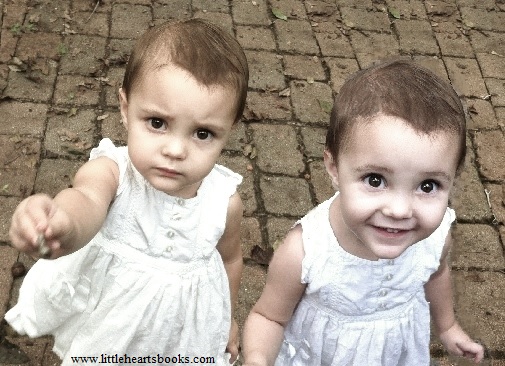 Mattie was hungry and tired…so, sooo hungry and so, sooo tired! Her diaper was rolled under on one side, bothering her bottom, and her shoe was pinching her big toe. MISERY!
Mattie was hungry and tired…so, sooo hungry and so, sooo tired! Her diaper was rolled under on one side, bothering her bottom, and her shoe was pinching her big toe. MISERY!
She marched…well, toddled, into the kitchen to let the big people know all about it. Mommy was making dinner, and taking a super-duper long time doing it! And Daddy was talk, talk, talking.
Mattie drew a deep breath and said, “Brrrffft umpha nay!” There! Now the big people would fix her diaper, take off her shoe, hurry up and feed her, and she could finally, finally go to sleep!
But what was this? Mommy and Daddy just smiled at her and went back to doing what they were doing! What about her bottom? What about her big toe? Didn’t they know she was hungry and tired and MISERABLE?!?
Fine, she’d just take her shoe off herself and SHOW THEM HER BIG TOE! She sat down, making that irritating fold in her diaper downright painful, and tugged and pulled on her shoe until she finally managed to pry it off, then waved her big toe at Mommy and Daddy. “Ooomm ffrr!” she insisted. But, once again, Mommy and Daddy just smiled, and Daddy winked at Mattie, and they went back to what they were doing!
Enough was enough! Mattie was just done, done, done! She threw her shoe, accidentally landing it in the pot of noodles, flopped backwards, smacking her head on the ground quite painfully, and began to kick and wail out her troubles. Daddy scooped Mattie up and headed to the comfy ‘Time-in’ chair for a cuddle.
It took Mattie a few minutes to to wind down, after all, her diaper was still bothering her bottom and she was still hungry and tired, but Daddy just cuddled her close and rocked and rocked, singing Mattie’s favorite song softly, so softly, until her body relaxed and her sobs turned into funny little hiccups that made her giggle. Then, Daddy changed her diaper…oh, wonderful relief, that annoying fold was finally gone…and Mommy fed her, and then they settled into bed for a goodnight story.
~~~~~~~~~~~~~~
Meggie was hungry and tired…so, sooo hungry and so, sooo tired! Her diaper was rolled under on one side, bothering her bottom, and her shoe was pinching her big toe. MISERY!
She marched…well, toddled, into the kitchen to let the big people know all about it. Mommy was making dinner, and taking a super-duper long time doing it! And Daddy was talk, talk, talking.
Meggie drew a deep breath and said, “Brrrffft umpha nay!” There! Now the big people would fix her diaper, take off her shoe, hurry up and feed her, and she could finally, finally go to sleep! But what was this? Mommy and Daddy just smiled at her and went back to doing what they were doing! What about her bottom? What about her big toe? Didn’t they know she was hungry and tired and MISERABLE?!?
Fine, she’d just take her shoe off herself and SHOW THEM HER BIG TOE! She sat down, making that irritating fold in her diaper downright painful, and tugged and pulled on her shoe until she finally managed to pry it off, then waved her big toe at Mommy and Daddy. “Ooomm ffrr!” she insisted. But, once again, Mommy and Daddy just smiled, and Daddy winked at Meggie, and they went back to what they were doing!
Enough was enough! Meggie was just done, done, done! She threw her shoe, accidentally landing it in the pot of noodles, flopped backwards, smacking her head on the ground quite painfully, and began to kick and wail out her troubles. Daddy picked Meggie up, headed to the ‘Time-out’ chair, and firmly sat Meggie in it. Her head hurt from smacking it on the floor, and her diaper was rubbing her raw, and she was still hungry and so tired, and now she was sobbing uncontrollably and couldn’t catch her breath.
Meggie tried to go to Daddy, but he just put her back in the ‘Time-out’ chair. So she tried to go to Mommy, but Daddy put her back in the chair again, sternly instructing her to stay put.
This time, she stayed…stayed on the raw, rubbing diaper roll, stayed away from the scary, stern Daddy who had just been smiling at her a few minutes ago, stayed away from the Mommy who had rescued her from the scary next-door doggie this morning, but was just ignoring her cries now.
It took Meggie a long time to wind down, after all, her diaper was still bothering her bottom and she was still hungry and tired, but eventually her shaking stilled and her sobs quieted. Daddy came back and spoke sternly to her, making her tear up again, then he hugged her and she laid her head on his shoulder cautiously, not sure if he was going to stay the hugging Daddy or become the scary Daddy again. Daddy changed her diaper and Mommy put her in the highchair, then went to get her plate. But Meggie was too exhausted from crying to stay awake any longer, and she fell asleep in the highchair with her tiny head cradled in her arms, still hungry.
~~~~~~~
Behavior is communication. As the only adults in the relationship, it’s up to us to listen.
Related posts:
Toddlers, Tantrums, and Time-In’s, Oh My!
When Things Get Physical: Hitting, Throwing, Kicking, and Biting
When Children Act Out ~ Reflecting Our Emotions
Bridge Over Troubled Waters~Parenting a ‘Problem’ Child
The Incredible Power of the Whisper
The Taming of the Tantrum: A Toddler’s Perspective
The Thoughtful Parent’s Guide to Positive Parenting Guides
July 18, 2011 | Categories: attachment parenting, children's books, Christian parenting, cosleeping, food, gentle discipline, gentle parenting, natural parenting, parenting guide, positive discipline | Tags: attachment parenting, bedtime stories, children's books, Christian children's books, Christian parenting, cosleeping, discipline, gentle discipline, gentle parenting, positive parenting | 4 Comments »  Award-winnning author, L.R.Knost, is the founder and director of the children's rights advocacy and family consulting group, Little Hearts/Gentle Parenting Resources, and Editor-in-Chief of Holistic Parenting Magazine. Books by L.R.Knost include Whispers Through Time: Communication Through the Ages and Stages of Childhood ; Two Thousand Kisses a Day: Gentle Parenting Through the Ages and Stages ; The Gentle Parent: Positive, Practical, Effective Discipline ; and Jesus, the Gentle Parent: Gentle Christian Parenting the first four books in the Little Hearts Handbook gentle parenting series, and children’s picture books Petey’s Listening Ears and the soon-to-be-released Grumpykins series.
Award-winnning author, L.R.Knost, is the founder and director of the children's rights advocacy and family consulting group, Little Hearts/Gentle Parenting Resources, and Editor-in-Chief of Holistic Parenting Magazine. Books by L.R.Knost include Whispers Through Time: Communication Through the Ages and Stages of Childhood ; Two Thousand Kisses a Day: Gentle Parenting Through the Ages and Stages ; The Gentle Parent: Positive, Practical, Effective Discipline ; and Jesus, the Gentle Parent: Gentle Christian Parenting the first four books in the Little Hearts Handbook gentle parenting series, and children’s picture books Petey’s Listening Ears and the soon-to-be-released Grumpykins series.











